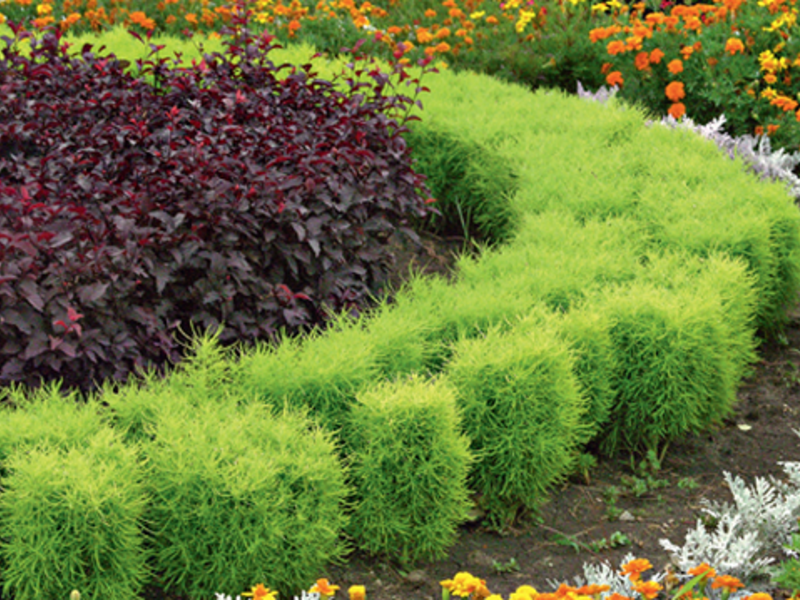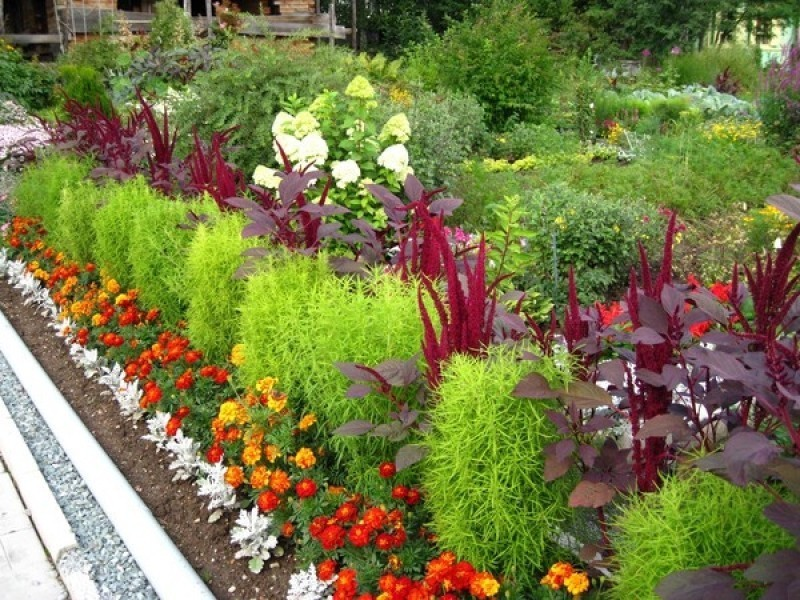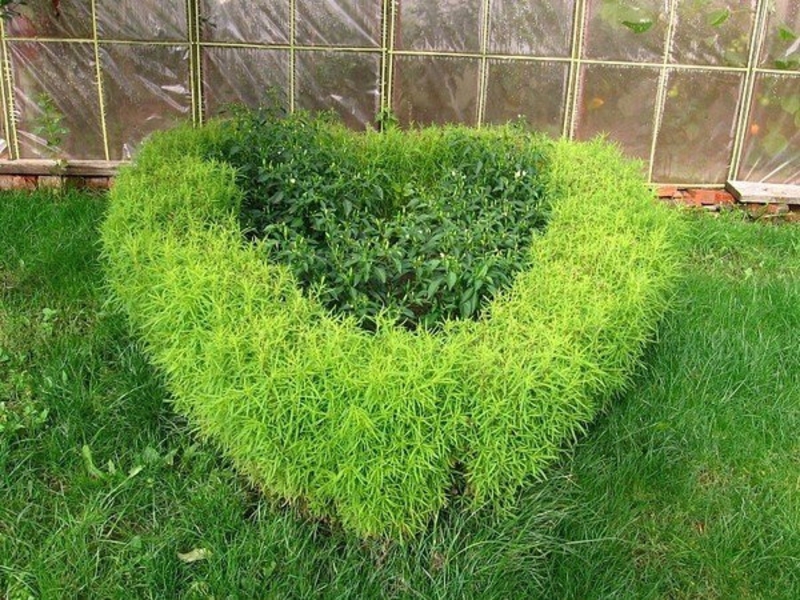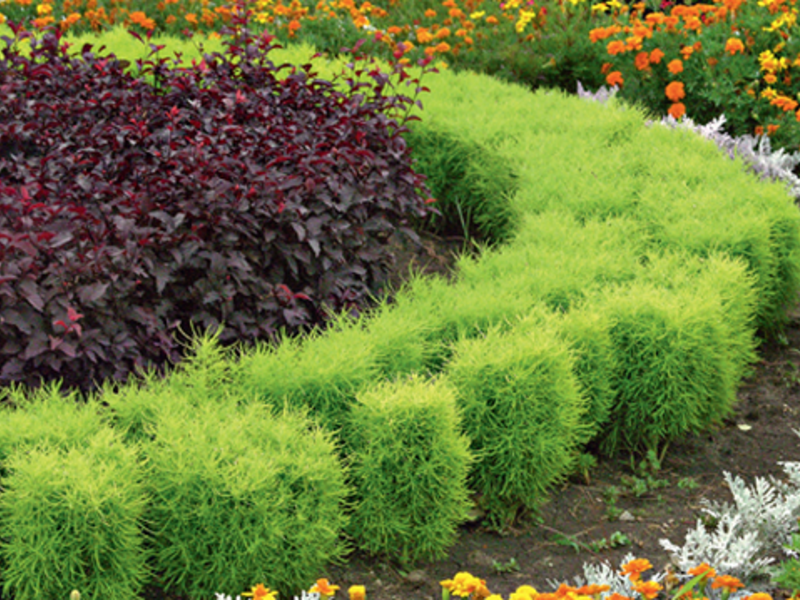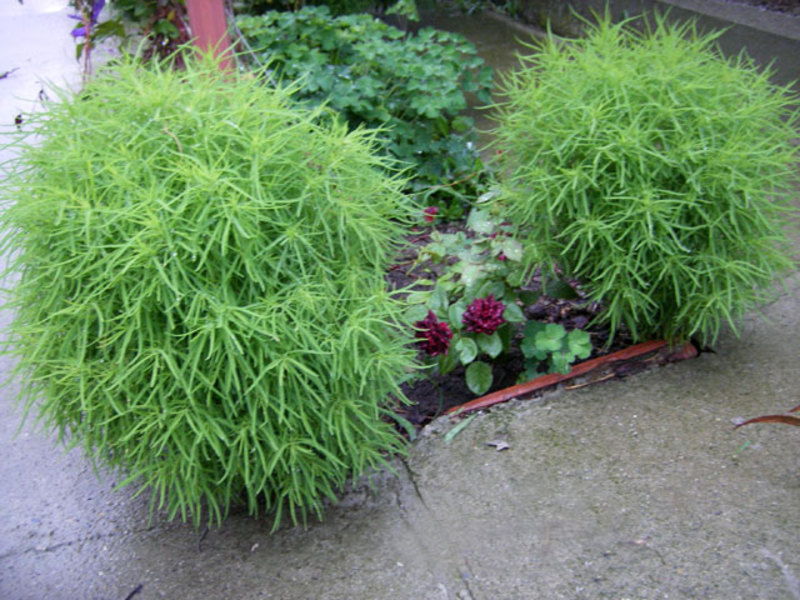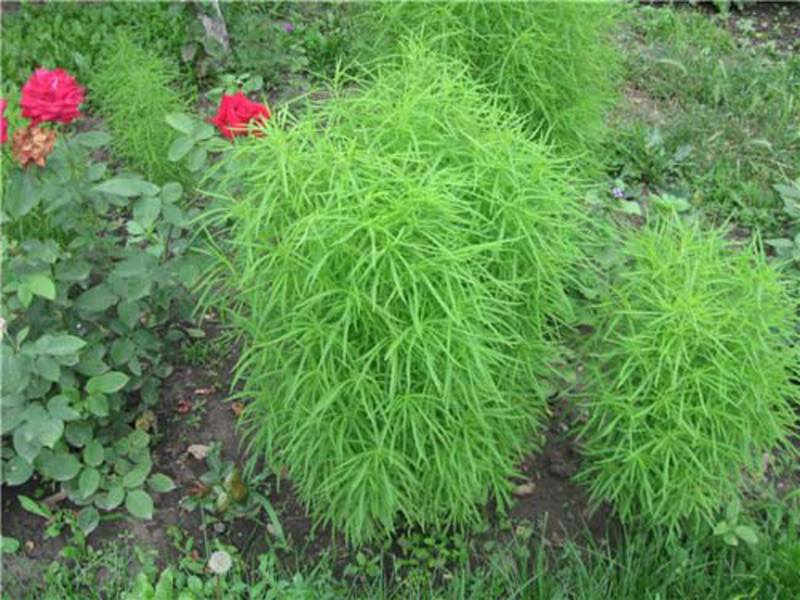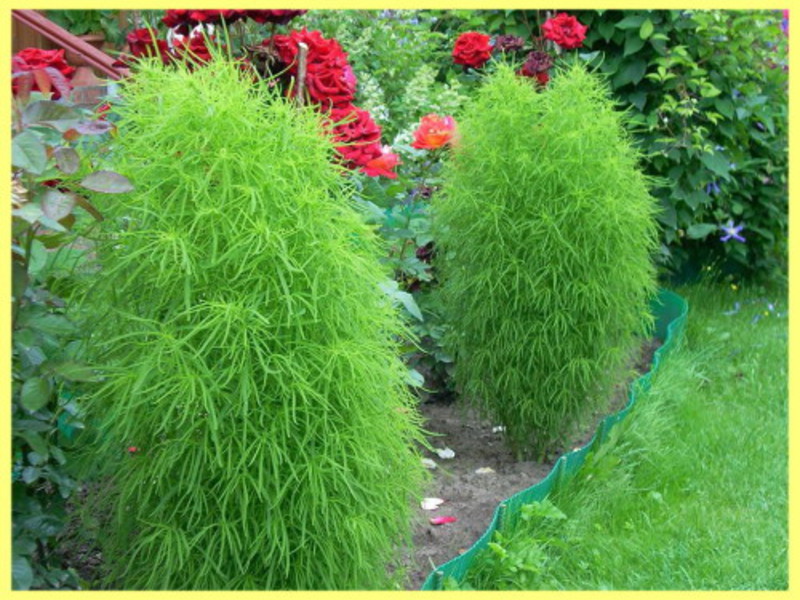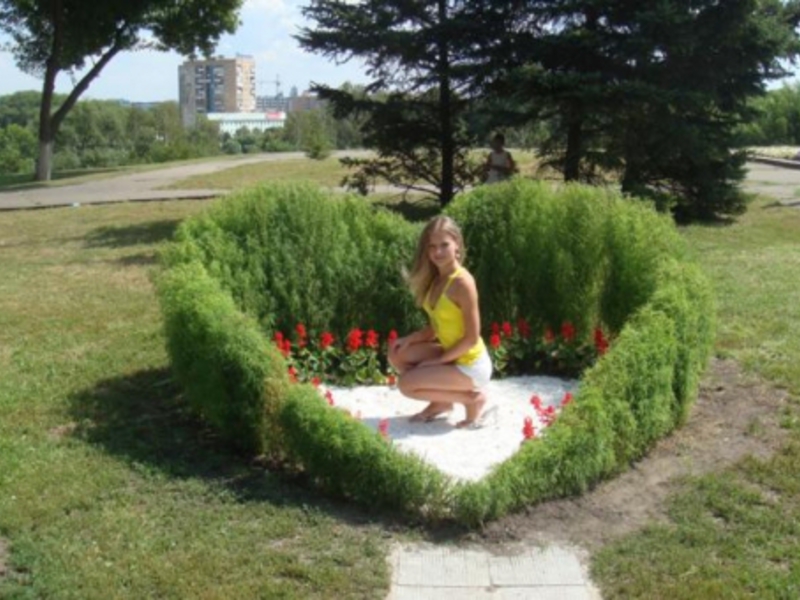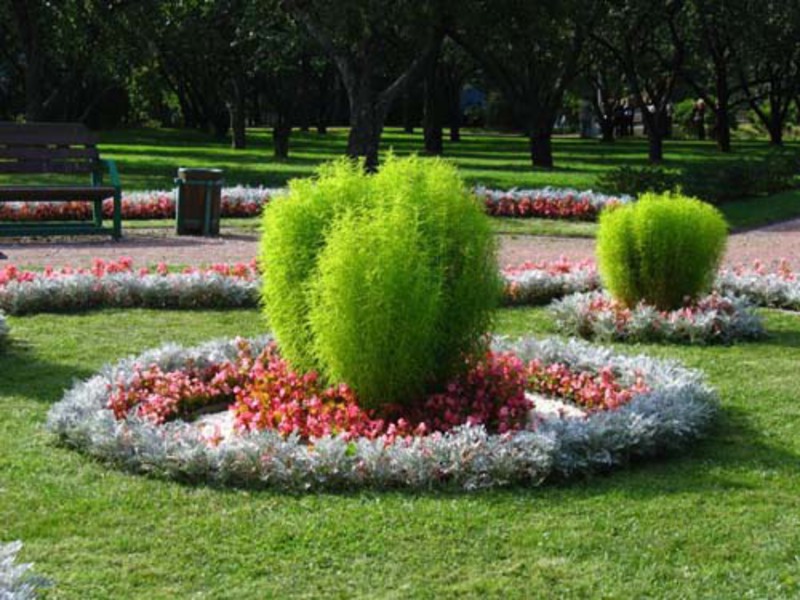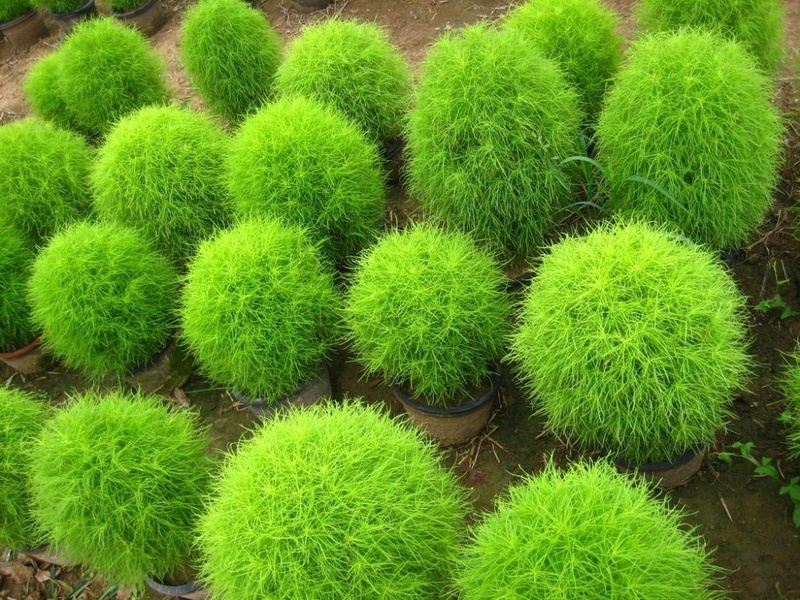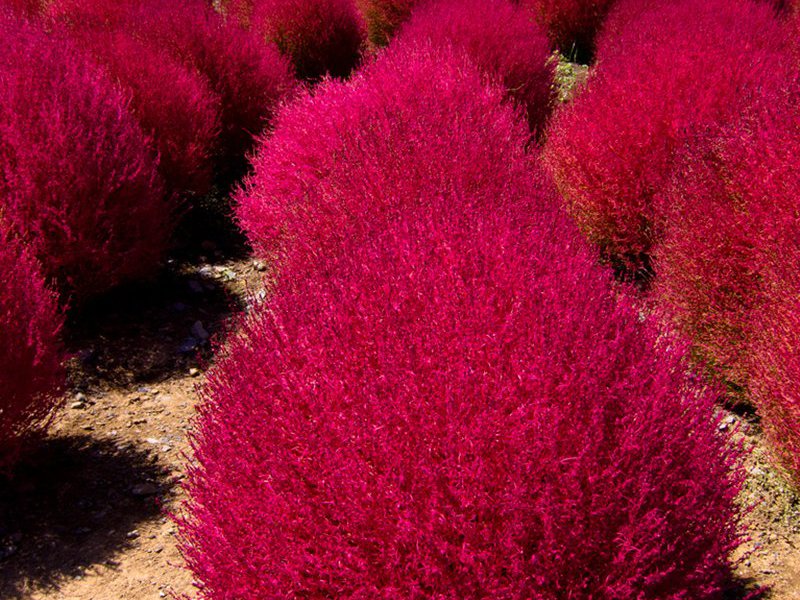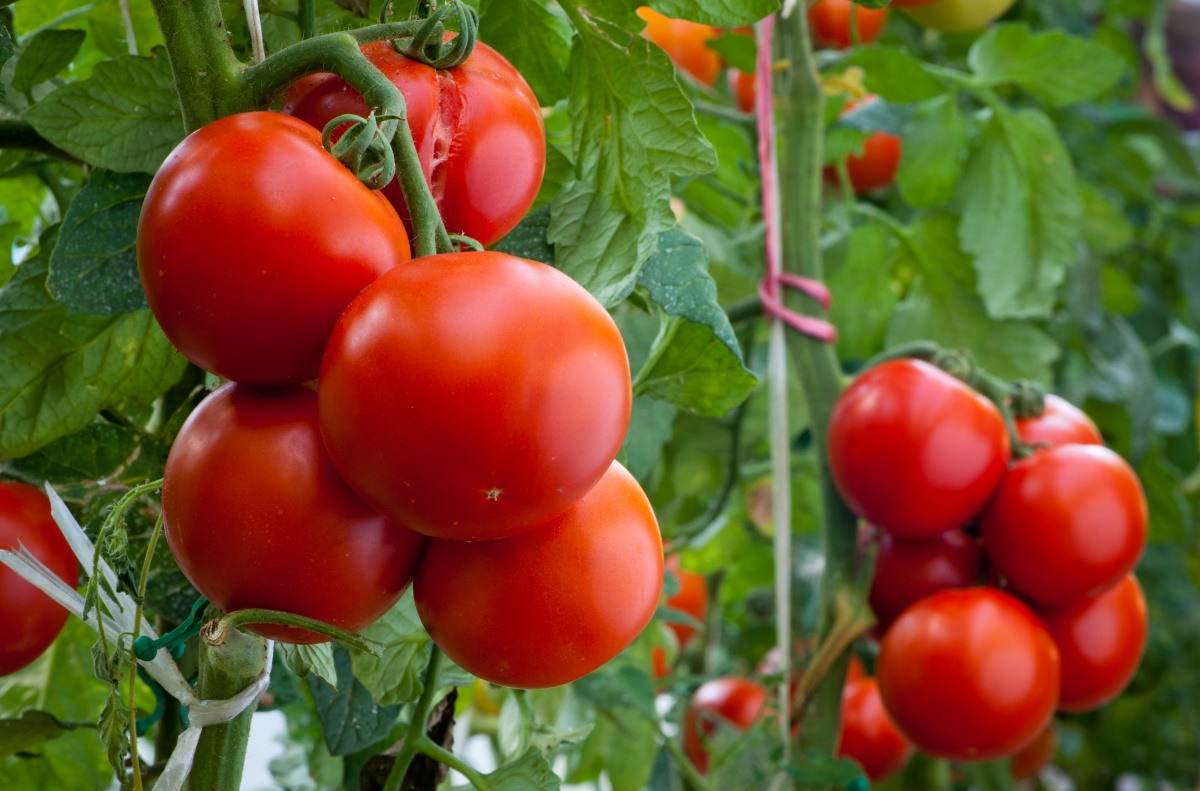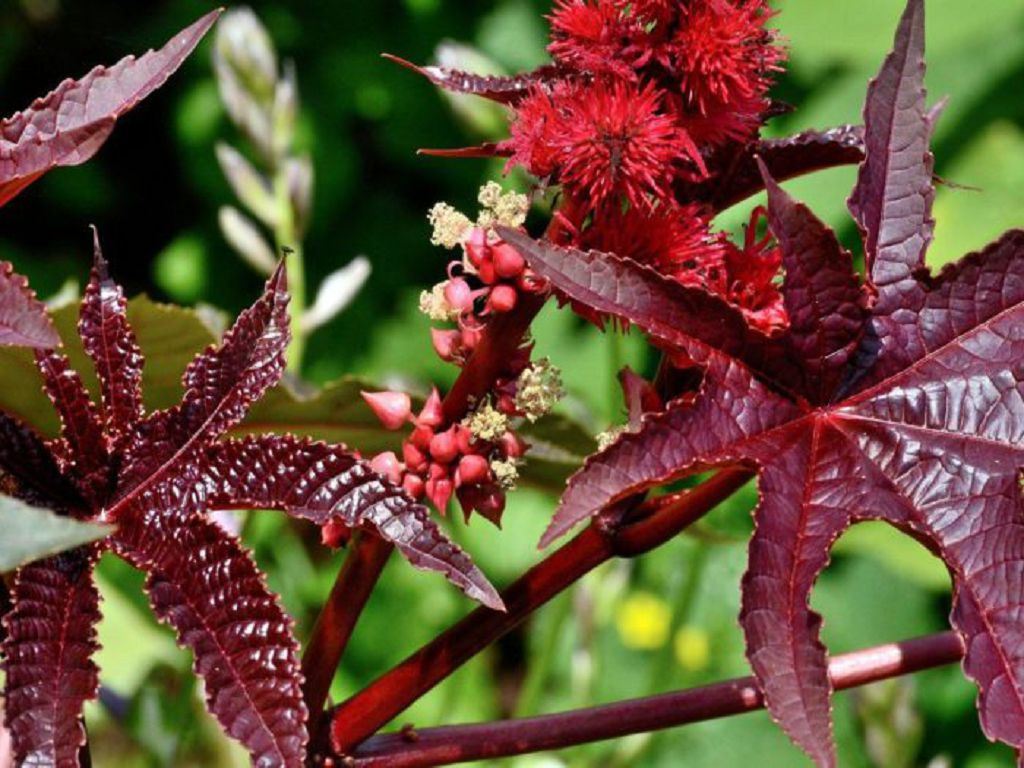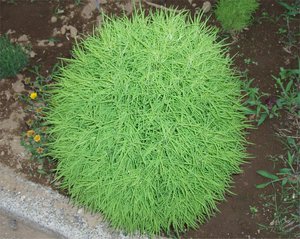 To help a park or garden look original and beautiful, it is often necessary to use not only traditional plants. Annual cypresses provide a good effect. Among gardeners, they are also known as kochia, which has many advantages. Many people appreciate it for its unpretentiousness and lack of strict requirements for the landing site. Such a destructive operation for many plants as pruning and forming a bush does not in any way affect the further development of the kochia, since this plant gains leaf mass in a fairly short time.
To help a park or garden look original and beautiful, it is often necessary to use not only traditional plants. Annual cypresses provide a good effect. Among gardeners, they are also known as kochia, which has many advantages. Many people appreciate it for its unpretentiousness and lack of strict requirements for the landing site. Such a destructive operation for many plants as pruning and forming a bush does not in any way affect the further development of the kochia, since this plant gains leaf mass in a fairly short time.
Cypress is usually planted in late spring. In this case, when creating favorable conditions, this annual can grow up to 1 m in height... From the point of view of landscape design, kohija is attractive because it retains a beautiful columnar shape. Many people like it with a neat crown, which is why it is perceived by many gardeners as a miniature cypress.
Content
Kokhia varieties
Sometimes this plant, which has been widely used in landscape design, is called broom cochia, for which there is a completely logical explanation. The fact is that once this plant was cultivated to obtain brooms for household needs. However, as interest in kochia increased, a large number of new varieties appeared, distinguished by a variety of foliage color palette. Therefore, today, for the decoration of the site, you can use cypress trees of a lettuce, emerald green, pinkish and almost purple hue, choosing from them the one that best correlates with the general style of the territory design.
Kohia is one of the brightest representatives of the Marev family. In fact she is a shrub, as indicated by its stems, which are juicy and flexible in every area. In the wild, kochia is represented in southern Europe, Australia, North and South America. Because of this, it is difficult to talk about where this plant first appeared. In the process of development, it forms a large number of branches, which are decorated with narrow leaves attached to individual branches.
There are quite unique varieties of kochia, which begin to transform in the fall: at this time of year, instead of their usual color, the leaves acquire a purple hue. From this, kochia retains a very bright and decorative appearance until the first frost. Some plant varieties, even with a cold snap, do not lose juicy greenery, which also makes them very elegant. If you pay attention to the flowers, then they do not stand out with pronounced decorative properties, since they are located in the axils of the foliage and are hidden from view.
Kohia: planting and care
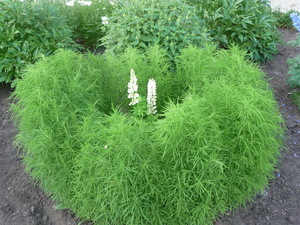 Observations show that this plant feels better. in steppe and semi-desert conditions... Therefore, if you want to grow kochia summer cyprus in your garden, then it is advisable to place it in sunny areas. And it's good if they are open. If the kochiya remains without moisture for some time, it will not do much harm to it. The consequences may be quite different if it grows in conditions of stagnant water or good drainage is not provided for it before planting.
Observations show that this plant feels better. in steppe and semi-desert conditions... Therefore, if you want to grow kochia summer cyprus in your garden, then it is advisable to place it in sunny areas. And it's good if they are open. If the kochiya remains without moisture for some time, it will not do much harm to it. The consequences may be quite different if it grows in conditions of stagnant water or good drainage is not provided for it before planting.
The owner does not have to worry about feeding to provide the bushes with the necessary nutrients. On almost any soil, kochia feels good, the only exceptions are acidic ones. Therefore, this moment must be taken into account when choosing a place for sowing seeds and transplants of adult seedlings... However, if you want the bushes to acquire their maximum size during the growing process, it is recommended to apply fertilizer to the soil during planting.
Landing features
Plants should be placed at a distance of at least 30 cm, or even better, if it is increased to 50. In this case, during the first stage of growth, the kochia will spend all its energy on a set of vegetative mass and only after that will enter the flowering phase. At this point, it stops growing. Due to the lack of free space for growth, the process of bud formation begins, which makes it difficult for the flowers to acquire a beautiful, natural shape.
Kohia summer cyprus cold-resistant crops, therefore, it is necessary to plan its planting no earlier than the first ten days of May. However, if you are anxious to quickly enjoy its bloom, then you can start growing seedlings.
But you can choose another method - sowing seeds in open ground. However, in this case, you will have to protect the planting from frost.
Cochia: growing from seed
The easiest way to get beautiful and large cochia bushes is start growing it in a greenhouse... In this case, you will have the opportunity to place the bushes in the way you want when planting. Usually, when sowing, all the seeds germinate, and young bushes when transplanted show excellent survival rate.
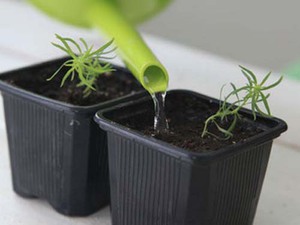 if you decide to grow seedlings in boxes, then it is recommended to adhere to the following placement scheme - 15-20 cm between plants. Cochia is prone to self-seeding, which requires the owner to track the moment when the seeds reach the stage of ripening. After collecting, the seeds remain viable for a long time, therefore, if you store them in a dark and dry place, you can increase the representation of this plant in your area in a couple of years;
if you decide to grow seedlings in boxes, then it is recommended to adhere to the following placement scheme - 15-20 cm between plants. Cochia is prone to self-seeding, which requires the owner to track the moment when the seeds reach the stage of ripening. After collecting, the seeds remain viable for a long time, therefore, if you store them in a dark and dry place, you can increase the representation of this plant in your area in a couple of years;- if you decide to sow seeds directly into the greenhouse, then you should provide good lighting in it. Therefore, during sowing, it is enough to slightly press the ground into them. Since the seeds are very small in size, thinning is often necessary after germination. For rapid growth, seedlings need to be regularly watered, and after 10 days from the moment of planting, fertilize with universal fertilizers;
- although kohija needs frequent watering, the portions of water should be small, which is especially important during the active growing season. Watering can be completed at the moment when the crown of the bushes is fully formed. Mature plants tolerate long periods of drought well, but they can be seriously damaged by sudden cold snaps. Therefore, if you decide to grow perennial varieties of kochii on your site, then you will have to cover the bushes while preparing them for winter.
Cochia bushes care
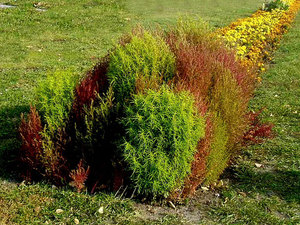 If you decide to immediately sow seeds in open ground, then you will have to watering frequentlyespecially in the first months of growth. This is very important, because it is at this time that the formation of the vegetative mass occurs. At the other stages of development, plants are undemanding to care. They respond well to weeding, as this allows an increase in the amount of air supplied.
If you decide to immediately sow seeds in open ground, then you will have to watering frequentlyespecially in the first months of growth. This is very important, because it is at this time that the formation of the vegetative mass occurs. At the other stages of development, plants are undemanding to care. They respond well to weeding, as this allows an increase in the amount of air supplied.
The second top dressing is usually planned a month after germination. At this time it is recommended apply mineral fertilizers... If you create favorable conditions for growth, then the bush takes about a month and a half to reach its maximum height, and from this moment the crown formation process begins.Kokhia summer cyprus tolerates a haircut without consequences, so it can be regularly given the necessary shape.
At the end of the next pruning under the bush, it is recommended to apply nitrogen fertilizers. It is also helpful to feed the plants with liquid nutrient solutions. Although she can do without them, such fertilizers also have a good effect on her condition. If you constantly feed Kokhia summer Cyprus, then she can easily endure a haircut carried out every two weeks.
Kochia is liked by many gardeners because resistant to many diseases... Although it cannot cope with some pests, for example, a spider mite. When signs of infection are found, it is often necessary to use special drugs. Since this plant consists of dense foliage, then for her spraying is useful, which is recommended to be held twice a season with an interval of two weeks.
It is usually enough to look at the plant to understand what it needs most.
- if the plant does not have enough moisture, then its foliage will wilt, and this will certainly affect the attractiveness of the plant. To remedy this situation, you need to water as soon as possible - usually this allows you to return the decorative properties to the bushes.
- if the problem is related to a deficiency of nutrients, then the cochia begins to fade, its color loses its former beauty. The way out in this situation can be the introduction of liquid fertilizers.
Preparing for winter
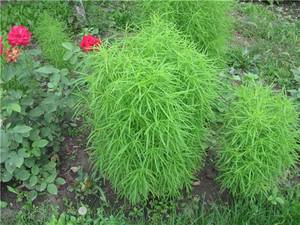 Since the kochia is an annual plant, it is dug up in the fall, thus preparing a place for planting the plants next year. For sheltering perennial varieties, you can use any available materials, combining them with crown shortening. A favorable moment for opening in spring is the period when frosts pass. For central Russia, this moment usually occurs in mid-May.
Since the kochia is an annual plant, it is dug up in the fall, thus preparing a place for planting the plants next year. For sheltering perennial varieties, you can use any available materials, combining them with crown shortening. A favorable moment for opening in spring is the period when frosts pass. For central Russia, this moment usually occurs in mid-May.
Cochia amazes many with its pronounced decorative properties, so it can often be found in gardens and parks. Moreover, it remains in demand also because it is not difficult to grow it in various conditions. But at the same time, you still have to carry out certain activities:
- first of all, it is necessary to monitor the absence of weeds near it;
- you also need to prevent the appearance of flowers and other cultivated plants between the bushes;
- if there is enough free space near the root zone, then this will create an excellent opportunity for the formation of a crown, which can acquire a perfectly symmetrical shape.
Conclusion
 Many owners of suburban areas often want to see in their garden not only plants familiar to our country, but also quite original specimens. Therefore, the choice of many of them often falls on the kohija. This annual culture fully justifies their decision because does not create problems with cultivation and leaving. A clear confirmation is that today kohija can be found not only in gardens, but also in parks.
Many owners of suburban areas often want to see in their garden not only plants familiar to our country, but also quite original specimens. Therefore, the choice of many of them often falls on the kohija. This annual culture fully justifies their decision because does not create problems with cultivation and leaving. A clear confirmation is that today kohija can be found not only in gardens, but also in parks.
In general, the high interest in the plant, which is regularly used in landscape design, is due to its unpretentious care. After all, the main difficulties arise only with the cultivation of young seedlings. Adult plants can often do without moisture without losing their attractiveness. The only thing that needs to be taken care of is protection from a cold snap, as this can greatly harm the plant.
